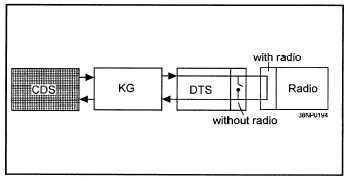operate properly is not generally true. It may be true only in infrequent, isolated
cases. Studies have shown that in the old NTDS system (CP-642 computer and the
AN/USQ-36 DTS), a dummy PU entered between a live PU and own address was
required for NCS data to be output at each NCS report opportunity. Since the
CP-642 computer and the AN/USQ-36 DTS have virtually disappeared, dummy PUs
should not be used.
Myth: Radio Silence Reduces Net Cycle Time!
The effect Radio Silence has on net cycle time depends on a number of factors.
As you saw in the last chapter, if a PU does not respond to a call up in 15 frames, the
PU is interrogated again. After another 15 frames, if the PU still does not respond,
then NCS polls the next PU. If the PU that goes to Radio Silence was sending
reports that exceeded 38 frames, then net cycle time would be reduced by the PU
going to Radio Silence. Effective net management would be to eliminate the PU
number of the unit that has to go into Radio Silence until that unit is able to reenter
the net.
As you can see, there are several misconceptions on the proper way to manage
and troubleshoot the Link-11 system. In this chapter, we concentrate on the tools
available to the technician to aid in the isolation of link problems.
LINK-11 PROGRAMMED OPERATIONAL
AND FUNCTIONAL APPRAISAL (POFA)
Two types of POFAs are used in the Link-11
system. These are the single station POFA, used to
check components of the Link-11 on board a single
station, and the multi-station POFA, used to check the
connectivity of several units.
SINGLE STATION POFA
The single station POFA is an end-around test that
transfers canned data from the computer through the
crypto device and the data terminal. The single
station POFA can also be run through the radio set to
check out part of the audio communications path
further.
POFA Setup
The POFA is a special program that is loaded into
the computer. It is very important that you follow the
instruction manual when attempting to run the POFA.
The POFA is designed to run in full-duplex mode.
Normal link operations use the half-duplex mode.
“Full duplex” means the system is configured to
transmit and receive data at the same time. In the
DTS, this is accomplished by the transmit audio being
fed directly into the receive input. Also, if the DTS is
operating in full-duplex mode, the rest of the system,
especially the crypto device, must be in full duplex.
On the KG-40, full duplex is accomplished when the
front panel switch is turned to the POFA TEST
position.
Analyzing Single Station POFA
When a single station POFA is completed, a
printout of the results is produced. To analyze this
printout properly, the technician must understand
Figure 5-1.—Single station POFA configurations.
5-3


